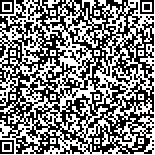本文已被:浏览 29次 下载 17次
投稿时间:2024-08-15 网络发布日期:2025-06-20
投稿时间:2024-08-15 网络发布日期:2025-06-20
中文摘要: 目的 研究超声引导下近端连续收肌管阻滞(ACB)和中段连续ACB对老年患者全膝关节置换(TKA)术后疼痛和股四头肌肌力的影响。方法 选择东南大学附属中大医院2022年10月至2023年12月择期行全麻下TKA的80例老年患者,按照随机数字表法分为两组:超声引导下近端ACB组(P组40例)和超声引导下中段ACB组(M组40例)。两组患者均于手术结束转到麻醉复苏室在超声引导下放置导管行连续神经阻滞。观察患者术后静息状态视觉模拟量表(VAS)评分、活动状态VAS评分、股四头肌肌力、膝关节活动度、局麻药罗哌卡因的累计量、补救镇痛、术后恶心呕吐、术后住院时间和连续神经阻滞并发症的发生情况。主要观察时点分别为置管操作后即时(T0)、术后4 h(T1)、术后8 h(T2)、术后24 h(T3)、术后48 h(T4)、术后 72 h(T5)。结果 两组患者术后静息状态VAS 评分、活动状态 VAS 评分均具有时间变化趋势(P<0.01)。P组在T3时点股四头肌肌力[(54.7±20.6)kg vs(67.5±28.4)kg]、罗哌卡因累计量[(205.8±33.7)mL vs(223.6±42.5)mL]低于 M 组,差异有统计学意义(P<0.05);膝关节活动度[(68.9±7.9)° vs(65.2±8.5)°]略高于 M 组,但差异无统计学意义(P>0.05)。结论 超声引导下近端连续ACB在老年患者全膝置换术后24 h的活动痛镇痛效果显著优于中段连续ACB,能够显著减少罗哌卡因用量,但降低了股四头肌肌力。
Abstract:Objective To study the effects of ultrasound -guided proximal continuous adductor canal block (ACB) and mid - segment continuous ACB on postoperative pain and muscle strength of quadriceps femoris in elderly patients undergoing total knee arthroplasty (TKA) . Methods Eighty elderly patients scheduled for elective TKA under general anesthesia at Zhongda Hospital Southeast University from October 2022 to December 2023 were selected and randomly divided into two groups according to the random number table method:the ultrasound - guided proximal ACB group (group P,n = 40) and the ultrasound-guided mid-segment ACB group (group M,n = 40) . Catheters were placed under ultrasound guidance in both groups for continuous nerve block when patients were transferred to anesthesia resuscitation room after the end of the operation. The observation indicators included postoperative resting state Visual analogue scale (VAS) score,activity state VAS score,quadriceps femoris muscle strength,range of motion of the knee joint,cumulative dose of local anesthetic ropivacaine,remedial analgesia,postoperative nausea and vomiting,postoperative hospital stay,and the occurrence of complications of continuous nerve block. The main observation time points were immediately after catheter placement (T0) ,4 hours postoperatively (T1) ,8 hours postoperatively (T2) ,24 hours postoperatively (T3) ,48 hours postoperatively (T4) ,and 72 hours postoperatively (T5) . Results The postoperative resting state VAS scores and activity state VAS scores of patients in both groups showed a trend of change over time (P <0.01) . At time point T3,the quadriceps femoris muscle strength[ (54.7 ± 20.6) kg vs (67.5 ± 28.4) kg]and the total dose of ropivacaine[ (205.8 ± 33.7) mL vs (223.6 ± 42.5) mL]in group P were lower than those in group M,with statistically significant differences (P < 0.05) ;the range of motion of the knee joint in group P[ (68.9 ± 7.9) ° vs (65.2 ± 8.5) °]was slightly higher than that in group M,but the difference was not statistically significant (P > 0.05) . Conclusion Ultrasound - guided proximal continuous ACB has a significantly better analgesic effect on activity pain 24 hours after TKA in elderly patients compared with mid - segment continuous ACB. It can significantly reduce the dosage of ropivacaine,but decrease the muscle strength of the quadriceps femoris.
keywords: Total knee arthroplasty Arthritis Ultrasound ⁃guided Continuous adductor canal block Adductor canal catheterization Postoperative analgesia Quadriceps femoris muscle strength
文章编号: 中图分类号:R614.4 文献标志码:A
基金项目:
附件
引用文本:
周达磊,袁静,韩朝永,等.不同位置连续收肌管阻滞对老年患者全膝关节置换术后疼痛及股四头肌肌力影响的比较[J].中国临床研究,2025,38(6):836-840.
周达磊,袁静,韩朝永,等.不同位置连续收肌管阻滞对老年患者全膝关节置换术后疼痛及股四头肌肌力影响的比较[J].中国临床研究,2025,38(6):836-840.
